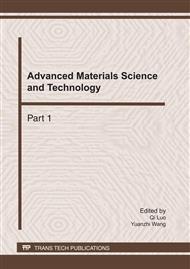p.987
p.993
p.998
p.1006
p.1013
p.1019
p.1025
p.1031
p.1038
A Study on Machinability in Turning 1Cr18Ni9Ti Steel under Minimum Quantity Lubrication Machining
Abstract:
The present study show that metal cutting fluids changes the machinability because of their lubrication and cooling in turning 1Cr18Ni9Ti steel under minimum quantity lubrication (MQL) Machining. The experiments compares the mechanical performance of MQL to completely dry lubrication for the turning of 1Cr18Ni9Ti steel based on experimental measurement of cutting temperature, cutting forces, surface roughness, and dimensional deviation. Results indicated that the use of near dry lubrication leads to lower cutting temperature and cutting force, favorable chip-tool interaction, reduced tool wears, surface roughness, and dimensional deviation.
Info:
Periodical:
Pages:
1013-1017
Citation:
Online since:
January 2011
Authors:
Keywords:
Price:
Сopyright:
© 2011 Trans Tech Publications Ltd. All Rights Reserved
Share:
Citation:


